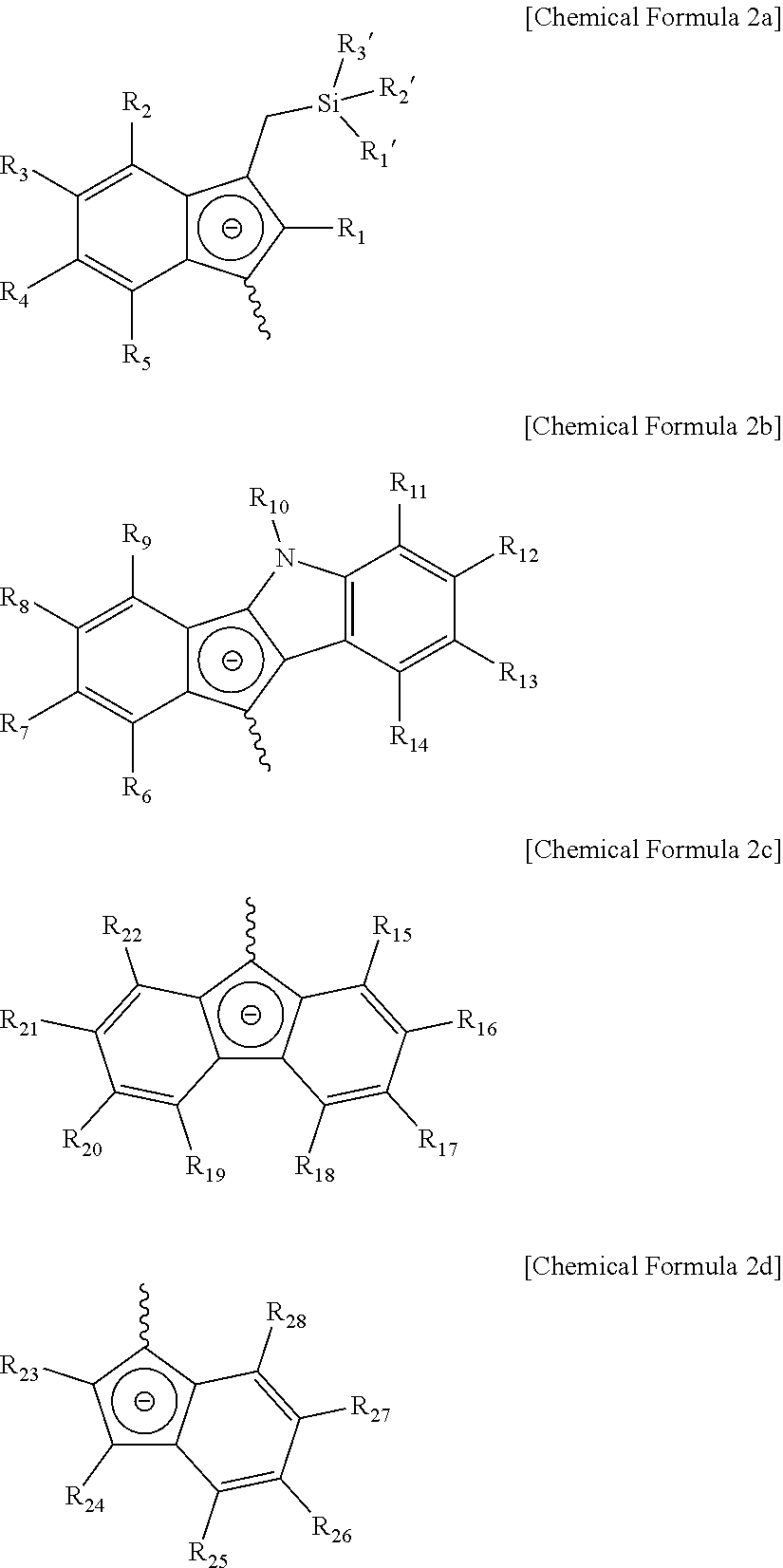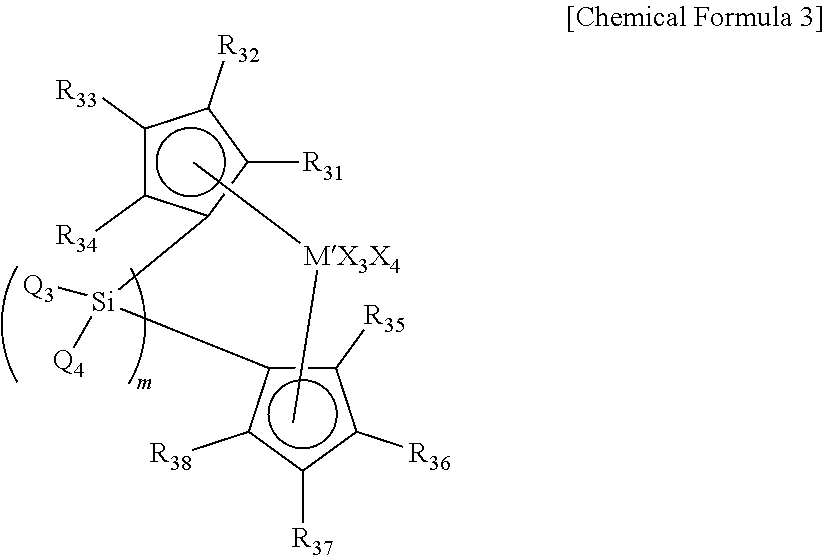Assessment Method For Injection Molding Property Of Plastic Form
- Summary
- Abstract
- Description
- Claims
- Application Information
AI Technical Summary
Benefits of technology
Problems solved by technology
Method used
Image
Examples
synthesis example 1
Metallocene Compound
[0201]1-1. Preparation of Ligand Compound.
[0202]2.331 g (10 mmol) of indenoindole was added to a dried 250 mL Schlenk flask, and 40 mL of ether was injected under argon. The ether solution was cooled up to 0° C. and then 4.8 mL (12 mmol) of 2.5 M nBuLi hexane solution was slowly added dropwise thereto. The reaction mixture was slowly warmed up to room temperature and then stirred until the next day. Another 250 mL Schlenk flask was filled with 20 mL of ether and then 3.6 mL (30 mmol) of dichloromethyl(tertbutoxyhexyl)silane was injected. The flask was cooled up to −78° C., to which a lithiated solution of indenoindole was injected through a cannula. After completion of the injection, the mixture was slowly warmed up to room temperature, and then stirred for about 5 hours and then stirred for one day. Then, the flask was quenched by adding ml of water, and the organic layer was separated and dried over MgSO4. The ether used as solvent was removed under reduced pre...
synthesis example 2
Metallocene Compound
[0210]2-1. Preparation of Ligand Compound
[0211]10.8 g (100 mmol) of chlorobutanol was added to a dried 250 mL Schlenk flask, to which 10 g of molecular sieve and 100 mL of MTBE were added and then 20 g of sulfuric acid was slowly added over 30 minutes. The reaction mixture slowly changed to pink over time. After 16 hours, it was poured into saturated sodium bicarbonate solution cooled in an ice bath. Ether (100 mL×4) was added to this mixture and extracted several times. The collected organic layers were dried over MgSO4. After filtration, the solvent was removed under vacuum and reduced pressure. Thereby, 10 g (yield: 60%) of 1-(tertbutoxy)-4-chlorobutane in the form of yellow liquid was obtained.
[0212]1H NMR (500 MHz, CDCl3): 1.16 (9H, s), 1.67˜1.76 (2H, m), 1.86˜1.90 (2H, m), 1.94 (1H, m), 3.36 (2H, m), 3.44 (1H, m), 3.57 (3H, m)
[0213]4.5 g (25 mmol) of 1-(tertbutoxy)-4-chlorobutane synthesized above was added to a dried 250 mL Schlenk flask and dissolved in 4...
preparation example 1
ted Catalyst
[0219]50 mL of toluene solution was added to a 300 mL glass reactor, to which 10 g of dried silica (SP 2410, manufactured by Grace Davison) was added and then stirred while raising the reactor temperature to 40° C. 60 mL of 10 wt % methylaluminoxane (MAO) / toluene solution was added thereto. After raising the temperature to 60° C., the mixture was stirred at 200 rpm for 12 hours. After lowering the reactor temperature to 40° C., stirring was stopped and settling was performed for 10 minutes, and then the reaction solution was subjected to decantation. Again, 100 mL of toluene was added thereto and stirred for minutes. Stirring was stopped and settling was performed for 10 minutes, and then the toluene solution was subjected to decantation.
[0220]50 mL of toluene was added to the reactor, 0.50 g of the metallocene compound of Synthesis Example 1 as a high molecular weight catalyst precursor and 10 mL of toluene were added to a reactor, and the mixture was stirred at 200 rpm...
PUM
| Property | Measurement | Unit |
|---|---|---|
| Temperature | aaaaa | aaaaa |
| Temperature | aaaaa | aaaaa |
| Weight | aaaaa | aaaaa |
Abstract
Description
Claims
Application Information
 Login to View More
Login to View More - R&D
- Intellectual Property
- Life Sciences
- Materials
- Tech Scout
- Unparalleled Data Quality
- Higher Quality Content
- 60% Fewer Hallucinations
Browse by: Latest US Patents, China's latest patents, Technical Efficacy Thesaurus, Application Domain, Technology Topic, Popular Technical Reports.
© 2025 PatSnap. All rights reserved.Legal|Privacy policy|Modern Slavery Act Transparency Statement|Sitemap|About US| Contact US: help@patsnap.com



